1. ACTUATOR GEOMETRY
The script create_geom.py is used to create both linear as well as bending actuators. In this case, the script is run to create a 4-chambered bending actuator as shown below. The bending actuator achieves bending motion due to a thin un-stretchable layer attached at the bottom of the structure. Due to the symmetry of the structure, only half the portion of the entire actuator is created and modeled.
The geometric parameters of the actuator, such as the height, width and the length of a chamber, and the height and width of the inlet tunnel, the wall thickness, along with the number of chambers can be customized using the script. Further details on the input parameters are described in the script.
As an example, the following geometry is generated in Abaqus CAE when the script is run using the parameters shown below:
Example: create_geom.py actuator bnd U ogden3.mat outfile.cae 0.05 200 4 --mesh_size 2.0 --chamber 8 8 2 --wall 7
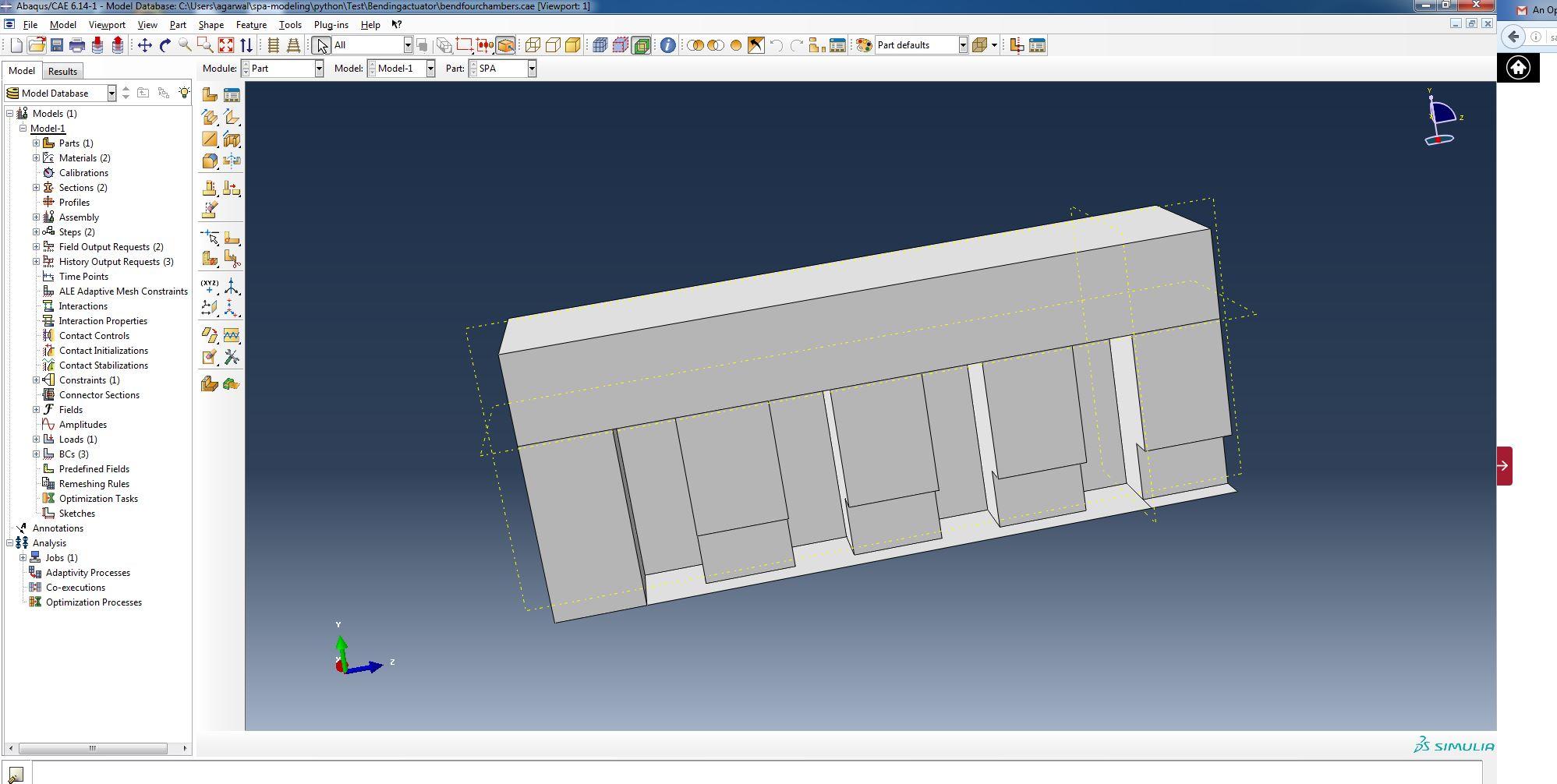
2. MATERIAL CONSTITUTIVE MODEL
The elastomers typically used to create soft actuators exhibit hyperelastic behavior. The design tool provides the ability to model this behavior using several well-established constitutive laws (for a complete list, please see the scripts section). In addition, the user has the option to include viscoelastic behavior as well to capture any time dependent effects. For this example, the chambers are made in Exoflex-30 material while the thin un-stretchable layer is made of silk. The material Ecoflex-30 is modeled using a hyperelastic model while silk is modeled using a linear elastic model, as shown in image below. A matfile containing the material parameters is provided as an input to the script. A 3-term Ogden model is used for Ecoflex-30 in this example, with the following coefficients:
mu1 = 0.001887; alpha 1 = -3.848; mu2 = 0.02225; alpha2 = 0.663; mu3= 0.003574; alpha 3 = 4.225; D1 = 2.93; D2 = 0; D3 = 0
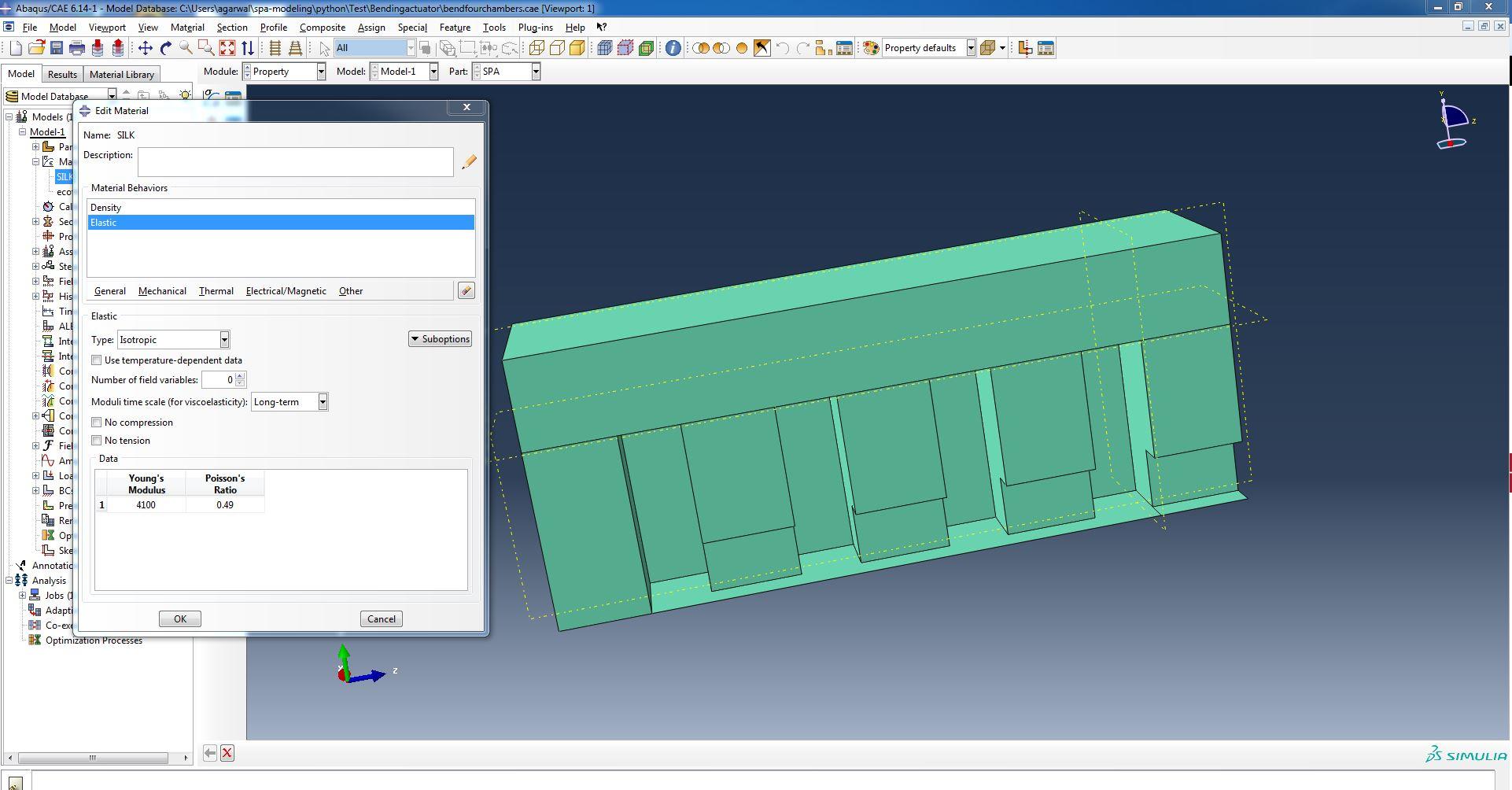
3. PRESSURE LOADS
The input loads are also specified as one of the parameters in the script above. In this example, an input pressure of 50 kPa was specified on the chamber and passage walls. The following figure shows the corresponding load application in the Abaqus CAE file generated using the script.
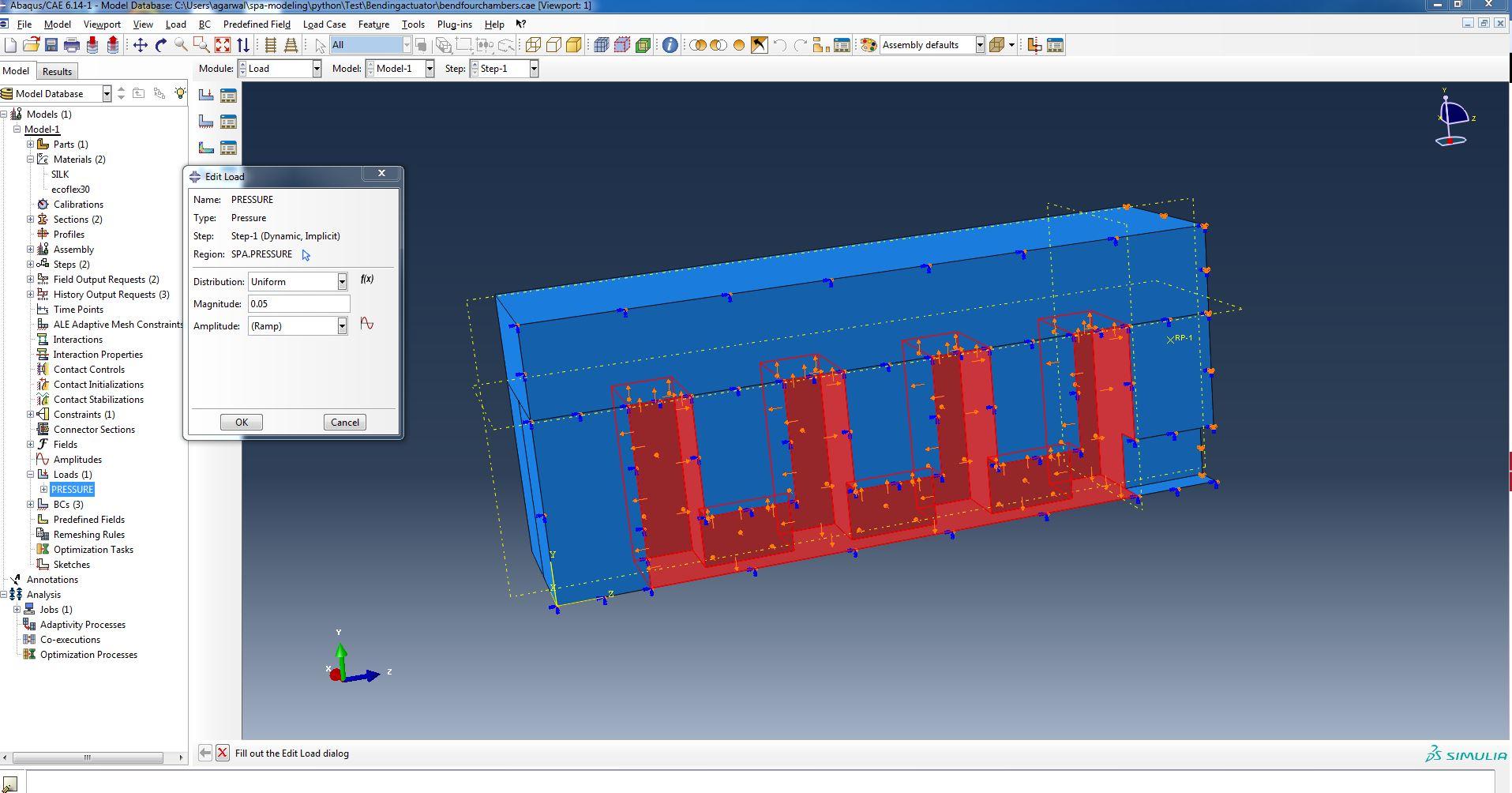
4. BOUNDARY CONDITIONS
The boundary conditions include half symmetry, as mentioned previously, and no translation for the inlet portion. These are also applied by default in the CAE file generated using the script. The corresponding images are shown below.
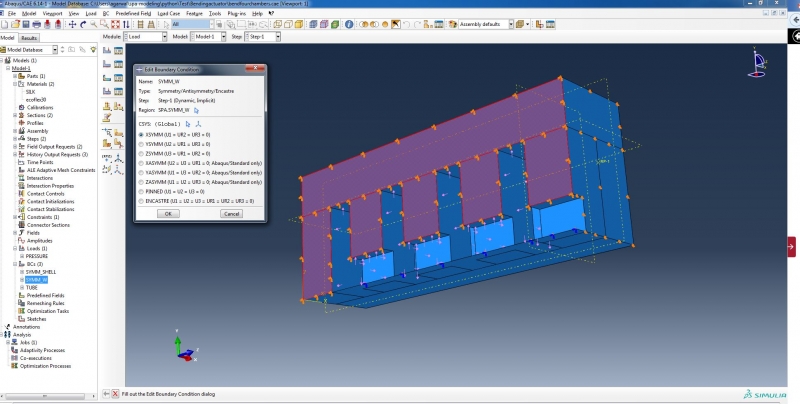
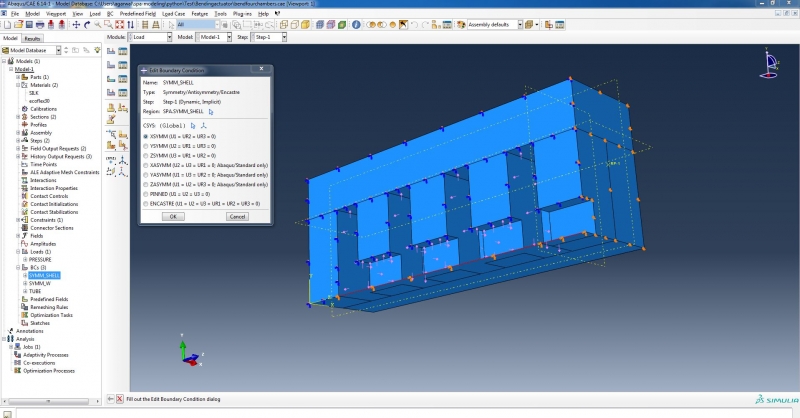
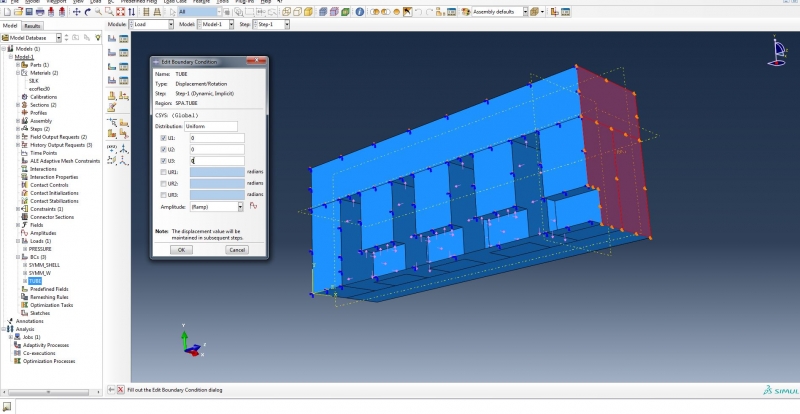
5. MESH GENERATION
The input and CAE files generated are ready to run for obtaining output and post-processing as they also include a mesh definition. In this case, due to the hyperelastic behavior of the materials used to create the actuators, standard quadratic elements are used with hybrid formulation and reduced integration. This ensures that any issues associated with shear or volumetric locking are avoided and that large deformations are permitted, as is expected in the case of the materials implemented for these actuators. The following image shows the mesh generated using the script, using a default element size of 2.0. The mesh size can be controlled as an input parameter through the script.
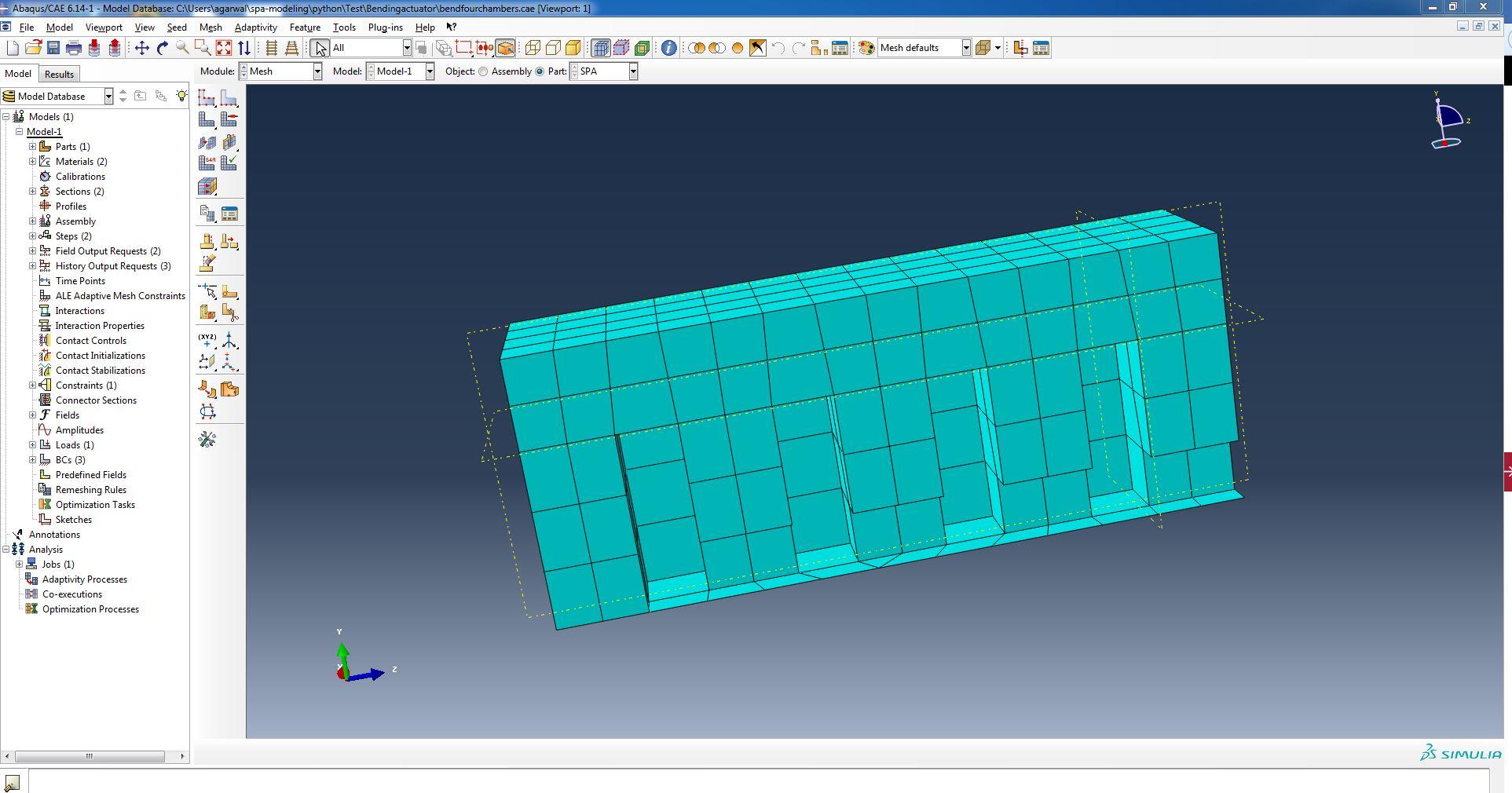
6. OUTPUT ANALYSIS
A variety of analysis can be performed using the design tool, including evaluation of the actuator performance under free and blocked loading conditions. This is specified in the script using the 'test' input parameter. Either 'U' or 'F' can be specified, signifying a free displacement test or a blocked force test, respectively.
Abaqus ODB result plots for bending motion generated are shown below for the free displacement condition, in which actuator images before and after pressurization are superposed. Plots for bending angle obtained vs. input pressure can also be generated using the script, as shown below.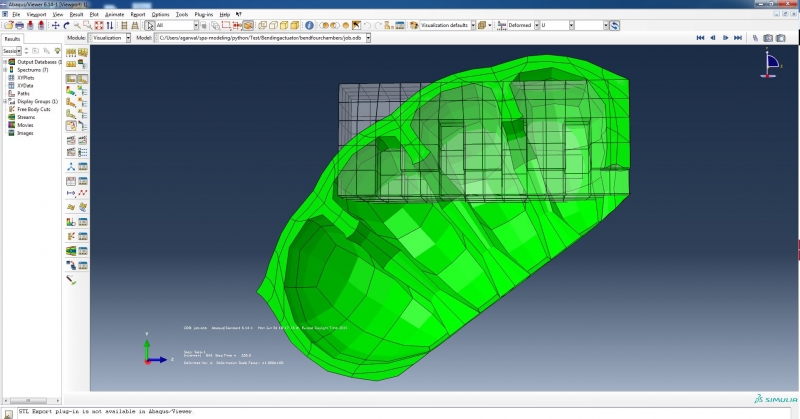
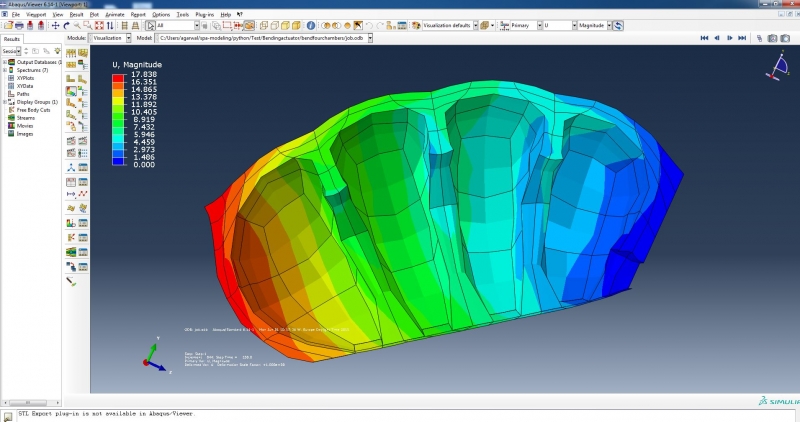
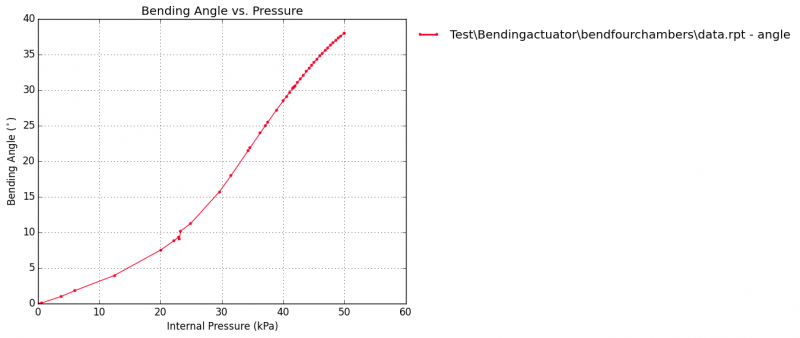
Further, the actuators can also be tested under blocked end conditions using the scripts provided. For this the 'test' parameter in the script would be modified to the value 'F' instead of 'U' for the example shown above.
